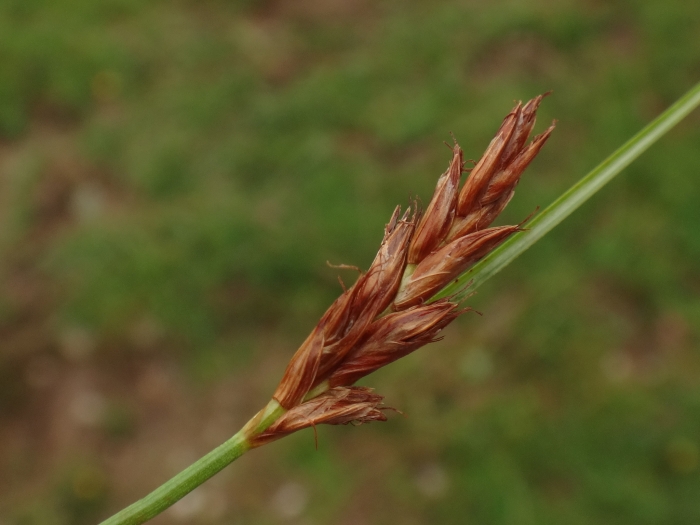Flat Sedge
(Blysmus compressus)
Flat Sedge (Blysmus compressus)
/
/

Christian Berg
CC BY 4.0
Image By:
Christian Berg
Recorded By:
Copyright:
CC BY 4.0
Copyright Notice:
Photo by: Christian Berg | License Type: CC BY 4.0 | License URL: http://creativecommons.org/licenses/by/4.0/ | Rights Holder: Christian Berg | Publisher: iNaturalist | Date Created: 2020-08-02T09:12:42-07:00 |
























Estimated Native Range
Summary
Blysmus compressus, commonly known as Flat Sedge, is a perennial herb native to wet meadows, marshes, and the edges of ponds and streams in Europe and parts of Asia, including the Himalayas. It typically grows to a height of 10-50 cm (4-20 inches) and forms dense clumps. Flat Sedge has a distinctive appearance with its compressed, three-angled stems and brownish-green, grass-like leaves. The plant produces small, brownish spikelets in dense clusters at the stem tips from June to August, which are not particularly showy but are interesting upon close inspection.
Flat Sedge is valued for its ability to thrive in wet conditions and is often used in the creation of naturalistic water gardens, wetland restoration projects, and as a component in rain gardens. It is also useful for erosion control along waterways. This sedge prefers full sun to part shade and requires consistently moist to wet soil conditions. It is not particular about soil type as long as it is wet. While generally low-maintenance, Flat Sedge can be susceptible to rust diseases in some conditions. It is not known for being invasive and does not have aggressive roots, making it a safe choice for planting near structures.CC BY-SA 4.0
Flat Sedge is valued for its ability to thrive in wet conditions and is often used in the creation of naturalistic water gardens, wetland restoration projects, and as a component in rain gardens. It is also useful for erosion control along waterways. This sedge prefers full sun to part shade and requires consistently moist to wet soil conditions. It is not particular about soil type as long as it is wet. While generally low-maintenance, Flat Sedge can be susceptible to rust diseases in some conditions. It is not known for being invasive and does not have aggressive roots, making it a safe choice for planting near structures.CC BY-SA 4.0
Plant Description
- Plant Type: Grass
- Height: 1-1.5 feet
- Width: 1-2 feet
- Growth Rate: Moderate
- Flower Color: N/A
- Flowering Season: Summer
- Leaf Retention: Deciduous
Growth Requirements
- Sun: Full Sun, Part Shade
- Water: High
- Drainage: Medium, Slow
Common Uses
Erosion Control, Low Maintenance, Water Garden
Natural Habitat
Wet meadows, marshes, and the edges of ponds and streams
Other Names
Common Names: Flat-sedge, Flatstem Bulrush
Scientific Names: , Blysmus compressus, Aplostemon compressus, Blysmopsis compressus, Blysmus compressus, Chaetospora compressa, Cyperus compressus, Heleogiton compressa, Nemochloa compressa, Nomochloa compressa
GBIF Accepted Name: